The Power of Nature

Henry David Thoreau spent two years of his life alone in nature. He left society, built his own shack from lumber and grew his own food. His reflections have been archived in his short book, Walden, and can be accessed by anyone thanks to the internet.
The profundity of his realizations aren't solely that he himself had them but also because of who he was. Thoreau's education level--being a Harvard graduate with a masters--was far beyond what most people imagine a woodsman to be. His renunciation for a short time, sheer handyman ability and spontaneous farming mission is nothing short of mysteriously divine. An avid follower of the Vedas, Thoreau credited Eastern wisdom of the Hindu to be supreme.
Since our word of the week is Abstemious, Thoreau comes to mind as a man who cultivated a massive amount of moderation in his life. He says of his time alone in the woods,
"I went to the woods because I wished to live deliberately, to front only the essential facts of life, and see if I could not learn what it had to teach, and not, when I came to die, discover that I had not lived. I did not wish to live what was not life, living is so dear; nor did I wish to practice resignation, unless it was quite necessary. I wanted to live deep and suck out all the marrow of life, to live so sturdily and Spartan-like as to put to rout all that was not life, to cut a broad swath and shave close, to drive life into a corner, and reduce it to its lowest terms, and, if it proved to be mean, why then to get the whole and genuine meanness of it, and publish its meanness to the world; or if it were sublime, to know it by experience, and be able to give a true account of it in my next excursion. For most men, it appears to me, are in a strange uncertainty about it, whether it is of the devil or of God, and have somewhat hastily concluded that it is the chief end of man here to "glorify God and enjoy him forever."
The awe and fascination that nature can deliver is something we all need to observe and experience at some point in our incarnation. Nature can be thought of as the honey produced by the honeycomb of creation. If we are to fully understand why we should even be moderate, then we must explore the deeper caverns that life has to offer.
I suppose these mushrooms that glow in the dark have spurred some sort of awe in myself. Such a fragile creature of life has come from something that has died. In this way we see a full circle and can step away from the myopic day to day of everyday life. As the monastics enter our short retreat from the world, we suggest you also retreat and use the weekend to get away from it all and, as Thoreau would say, "Not till we are lost, in other words, not till we have lost the world, do we begin to find ourselves, and realize where we are and the infinite extent of our relations."
Character Building Workbook Series: Abstemious

Character Building Workbook--Expanding Our Virtues
The monastery published the Character Building Workbook in 2015 as "a tool to help children and adults build, transform and improve their character." The workbook guides seekers toward goals of self-restraint, self-reliance, productivity and to have an overall sense of strength in character. To teach virtue is sometimes regarded as impossible, and whether it can be taught or is remembered is a deep philosophical matter in and of itself. Whatever the truth may be, Eastern sages and wisemen of history such as saint Avayar, Tirumular, Tiruvalluvar, and Western philosophers and Stoics such as Socrates, Plato and Epictetus, have all tried their best to, if at all possible, teach what they regarded as virtue in character and action.
A new series on our Monastery blog will be to take the sixty-four character traits and expand on them, one by one, and see if we can get a better understanding of our magnificent and complex virtuous soul nature. We begin with the first trait: Abstemious.
abstemious
adjective
not self-indulgent, especially when eating and drinking
Synonyms: self-denying, temperate, abstinent, moderate, self-disciplined, restrained, self-restrained
Abstemiousness is a quality that spiritual seekers must have. There is no denying that without some form of restriction yogis, swamis and sadhaka of the Hindu faith would not be able to bring eternal truths down to our normal plane of reality. Whether it be with foods that we all know we shouldn't be eating in excess, or activities that bog us down and make our lives miserable--self-denial and restriction often make us much more effective human beings at the same time making us more receptive to the shakti of a temple deity.
In our search through life we end up seeking some sort of wholeness or some completeness that either rebuilds us after losing our way or we simply just get older and more mature--usually that means the age we stop partying and start to realize we have to do something with our lives and actually make something of ourselves. In other words, we become aware that we are consciousness as we get older and living inside an excessive world starts to just feel bad. Our highest potential and soul nature often wants to avoid indulgent behavior, but that doesn't mean it comes naturally. Abstemious does not mean you become perfect, it means you sacrifice that which is easy for that which is hard. Over time we can expect change but this isn't an overnight experience. In the words of my guru Satguru Bodhinatha Veylanswami, we want progress not perfection.
A Word on Not Succeeding
What happens when your attempt at being abstemious doesn't work? Historically great souls do not avoid failures, pitfalls and distractions, what they do is overcome them over time. Anticipating failure can be a powerful tool to keep you from entering despair and frustration as you take a few steps towards your goal, and a few backwards. No boxer has ever entered a ring expecting a perfect match and to never be hit. He trains for the hit, anticipates challenge and is determined to get back up when it happens, not if it happens. Progress not perfection.
Where Does Abstemious Lead?
Using moderation in an effort to clear the subconscious and uphold a higher moral standard means we are on the path of self-denial and sacrifice. We give up those things that are no longer any use to us and to our goals. This takes constant effort, and to retrain the mind and body will often require being attentive to our weaknesses and keeping our guru informed every step of the way. The waking hours isn't enough either; as we know from Gurudeva's teaching, our sleep and dreams must also be a place of purity if want to completely own up to the duty we have as seekers on the path.
Aristotle's teaching on the subject is truly timeless, "For moral virtue or excellence is closely concerned with pleasure and pain. It is pleasure that moves us to do what is base, and pain that moves us to refrain from what is noble. And therefore, as Plato says, man needs to be so trained from his youth up as to find pleasure and pain in the right objects. This is what sound education means."
The Tirukkural's chapter on virtuous conduct is no less relevant,
"Virtuous conduct leads a man to eminent greatness. Therefore, it should be guarded as more precious than life itself."
We end with the Workbook's assignment for the weeks ahead: For the next two weeks, when tempted to eat or drink too much, restrain that desire by using your willpower, eating and drinking a reasonable amount.
Get the Workbook and comment below if you like this content
Connect with us on:
YouTube
Facebook
Publication Spotlight: Path to Siva
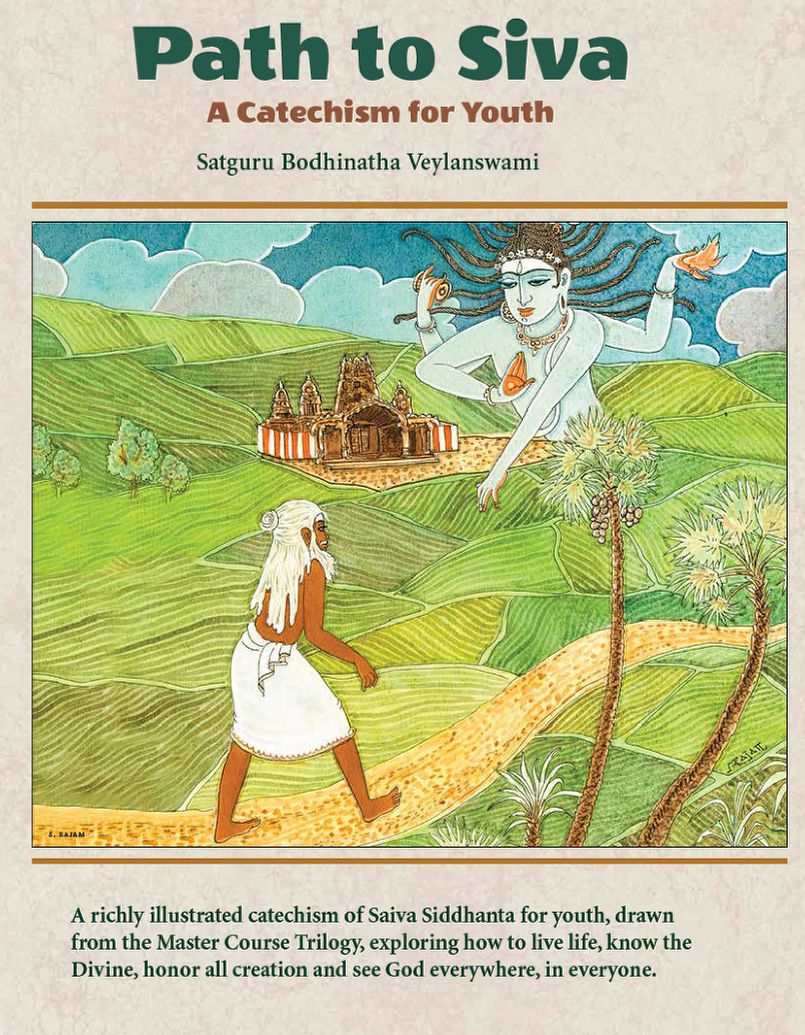
Our newest publication Path to Siva is explained by Satguru Bodhinatha Veylanswami as, "
based on Dancing, Living and Merging with Siva, the Master Course Trilogy created by my
Gurudeva, Sivaya Subramuniyaswami. Path to Siva presents all of the important teachings of
our Saiva religion, Shuddha Saiva Siddhanta. It is written with youth in mind, but is also ideal for anyone
who wants a condensed version of the Master Course. Note that we have reluctantly adopted the
English-language style of using masculine pronouns, such as He and His, when referring to God and the
Gods, even though they are beyond gender. Other options, for now, are awkward."
Satguru goes on to say from the introduction, "For Youth: The sixty-eight lessons in this book cover the most important things a Saivite Hindu
needs to know. Each lesson is short--just one or two pages--but packed with information. Here you
can find answers to questions about God Siva, Lord Ganesha, Lord Murugan and the devas--how
they can help us in our lives, and how to contact them through temple worship and home puja. You
will find clear explanations of karma, dharma and reincarnation, and how to use japa, meditation and
affi rmations to make your life better. You will learn the best ways to live in order to achieve your most
important goals. The lessons include insights on home life, getting along with others, religious tolerance,
vegetarianism and caring for the environment. They cover difficult philosophical areas, like death and
dying, reincarnation, sin and evil. Absorbing these short essays will provide a clear understanding of
our practices, beliefs and philosophy and give you a deep comprehension of life that few people have.
For Teachers: This book is intended for youth age 10 and older. As the teacher, you should be sure
your students understand all the words of the lesson text. This will make the meaning much clearer
in their minds. Encourage them to ask questions.
"For Parents: This may be the most important study your child undertakes. It is the study of
Saivism, the oldest form of Hinduism, and more specifi cally of Saiva Siddhanta. Some parents feel
that the study of religion is not important, that their children should focus solely on academic studies.
A wiser approach is to include both. The study of Saivite Hinduism as presented here explains
many practices that will help your child excel in his or her academic studies. It also creates a more
balanced life for children, a happier and less stressful childhood and more mature relationships.
Take an interest in your child's study of Path to Siva by reading all the lessons. Consider this catechism
the education of your child's soul and conscience, a spiritual training that will prepare him
or her to understand our religion, practice it with knowledge and be able to use its wisdom and
insights in facing the challenges of life. Encourage your child; help your child with the lessons and
you may find answers to questions of your own in the process."
Download the book
Find us on:
YouTube
Facebook
Hindu History Book Gifted to Texas Library



Siva in My Wonder; Siva in My Woe
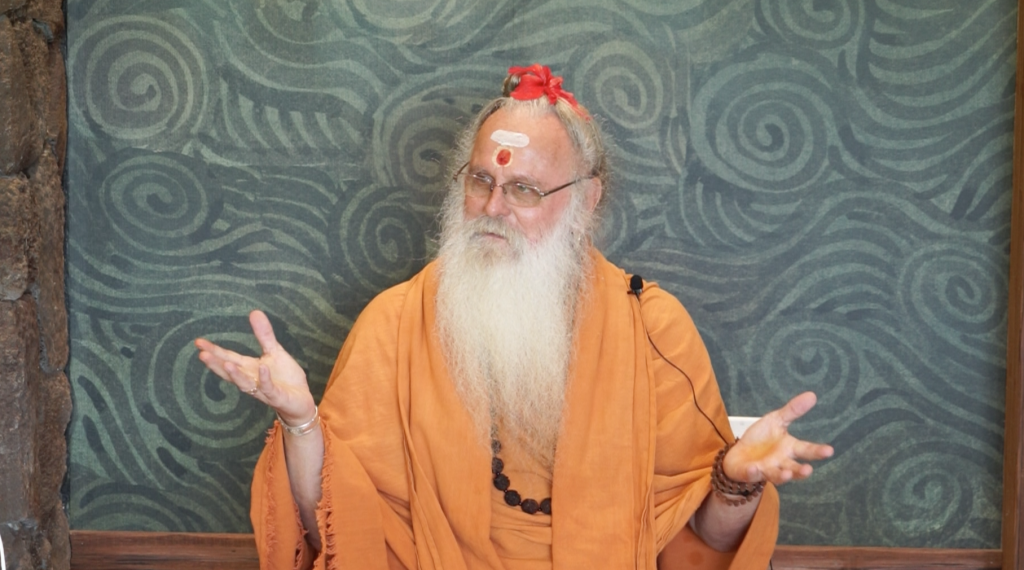
Leaving the Body Behind
SivaSiva App Officially Released for iOS and iPad
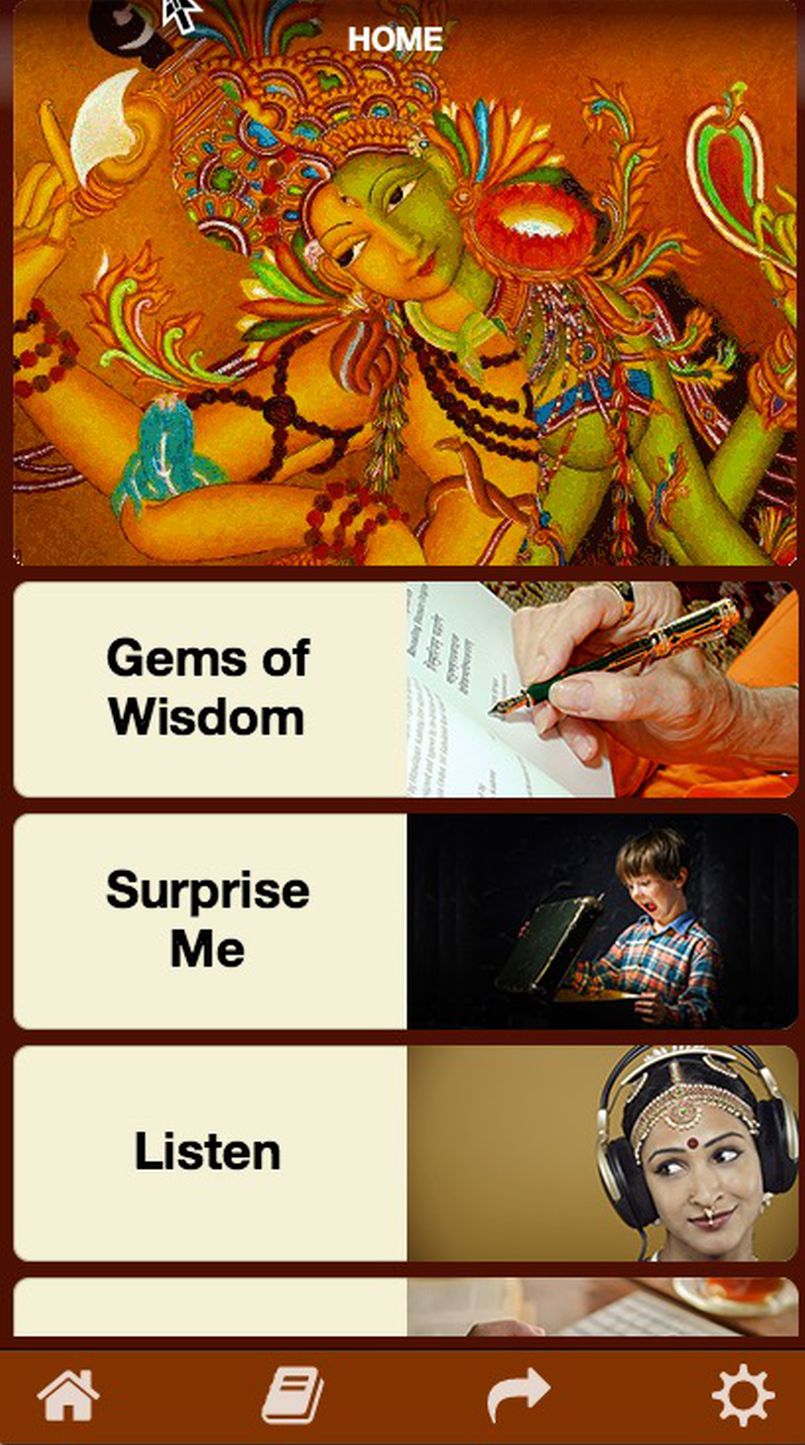
The SivaSiva App provides structured mobile access to the vast resources on our websites. Modules provide quick access and interaction with content related to Saivite Hinduism. The app also provides a gateway to our media collections. There are also interesting tools for your spiritual life, realms of practice, study, fun and upliftment, portals to our rich culture and philosophy for a mobile generation.
Click here to go to the iTunes App Store to download the app to your phone or computer.
We value your input. Please share with us what you feel will be useful for your personal life, practice, spiritual and cultural growth. use the "Feedback" option at any time to send us bug reports or ideas for future versions. Version 1 is just the beginning.
Overview
"SivaSiva" is a revered mantra from South India naming the divine within all. This app is a portal to the ancient, profound wisdom and rich culture of that tradition, retooled for the 21st century. It seeks to reach today's mobile generation who seek to understand Eastern metaphysics, find spiritual roots and enjoy authentic spiritual experience.
SivaSiva offers inspirational quotes to uplift your day, awesome photos and art, access to an extensive audio library, YouTube videos and more. Version One has tools for practice and study. Use the app to learn the basics of Saivite Hinduism by diving into the Path to Siva book, which is resident in the app even if you are off line. Read the daily Master Course lessons and practice Color Meditation. The entire current issue of Hinduism Today magazine is available inside the app. Quotes from books give you instant access to their source. A journal tracks your history. Tap favorites to come back to them tomorrow. Have fun with the word-puzzle and learn key concepts at the same time. SivaSiva is a tool for all those who seek daily spiritual upliftment.
The SivaSiva App is follows the model of the popular Asian "Megaapp" — which is like going to a giant super mall, a one space in which many needs are met. It is one large app that serves multiple needs that once would take many small apps.
A big challenge and requirement for this app comes from the age and interest levels of our users, who range from 14-year-olds who know little about Hinduism, all the way up to 80-year-old devotees who are knowledgeable and dedicated Saivite Hindus steeped in the tradition. Currently we have little content for small children. This will change in future versions, as we find ways to add modules that meet the "fun" requirements of both adults and 8-year olds at the same time.
Sometimes the question is asked, "How is this different from your website?" The answer is that users have limited time to choose from a vast wealth of content, and this app uses a strong "push" model that offers access to the culture and teachings without requiring users to search for things. It also offers in-app content that the user can access while offline without a connection. The SivaSiva app is a curated approach to content delivery, tailoring access to the needs of a mobile generation
Ten Yamas
THIS ONLY WORKS ON DESKTOP WITH A KEYBOARD in Safari and Firefox. Not Chrome. We will release a tap-to-move version in the future.
Please enjoy this fun little game about the 10 Yamas, our spiritual restraints in Hinduism. It is these restrains which make up step one of ashtanga yoga. Harnessing our actions and thus reactions, that we may stop creating more karma and eventually calm and quiet our minds. This leads us to keen observation and self reflection. This game should work in both Safari and Firefox. let us know what you think in the comments.
The Fine Art of Meditation
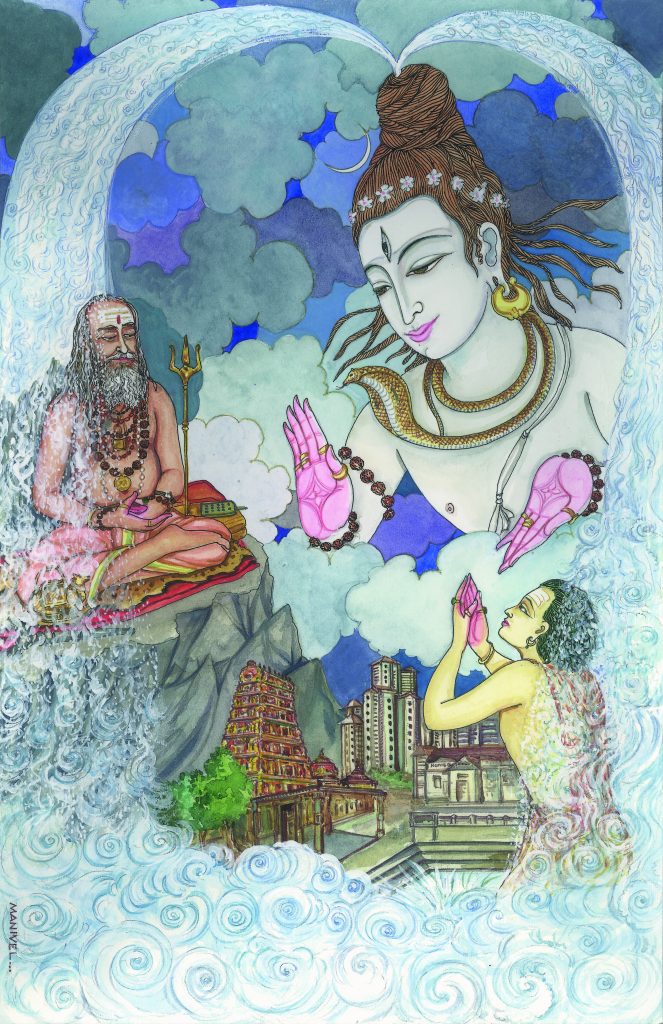 From Gurudeva's Merging with Siva
Lesson 254
Meditation is A Fine Art
Meditation is a fine art and should be approached in the
same way the fine arts are approached. That’s the way
we teach meditation at Himalayan Academy, as a fine art.
The artist-teachers are not running after the students.
You don’t learn a fine art that way. You go to your teacher
because you want to learn. You might go a long distance. You want to
learn, and so you study. He gives you something to work on. You go away
and you work on it, and you come back having perfected it. That’s how
we expect Academy students to progress along the path. Something has
to happen on the inside, and it usually does. ¶Controlling the breath is
the same as controlling awareness. They go hand in hand. During meditation,
the breath, the heartbeat, metabolism—it all slows down, just like
in sleep. You know, deep meditation and deep sleep are extremely similar.
Therefore, the practice of prâ∫â yâma and regulation of the breath, the
prâ∫as, the currents of the body, should really be mastered first. In the
very same way, the dancer doesn’t just start out dancing. He starts out
exercising first. He may exercise strenuously for a year before he begins
to really dance. The pianist doesn’t sit down at the piano and start with a
concert. He starts with the scales and with the chords. He starts by limbering
his fingers, by perfecting his rhythm and posture.
Meditation has to be taught like one of the fine arts. It’s only the finely
refined person who can really learn to meditate. Not everyone who wants to meditate can
learn to meditate. Not everyone who wants to learn to dance or to play
the piano can learn how to really, really do it. We need this preparation
of the physical body so that the physical and emotional bodies behave
themselves while you are in a deep state of meditation. ¶Your breath will
slow down until you almost seem to stop breathing. Sometimes you do,
and you’re breathing with an inner breath. You have to educate yourself
to that so it doesn’t make you fearful and bring you out of meditation
with a jerk and a gasp, which can then inhibit you. You can get fearful in
meditation. So, good basics must be learned for one to become a deep
meditator. You can spend hours or years working with the breath. Find
a good teacher first, one who keeps it simple and gentle. You don’t need
to strain. Start simply by slowing the breath down. Breathe by moving
the diaphragm instead of the chest. This is how children breathe, you
know. So, be a child. If you learn to control the breath, you can be master
of your awareness. ¶The sense of bhakti yoga, a sense of devotion, is
extremely important on the path. Unless we have a great bhakti, a great
devotion, we can easily be shaken from the spiritual path. It’s the fuel
that keeps us motivated. If we prepare our room before meditation by
lighting an oil lamp or candle, a stick of incense, or only setting out a few
fresh flowers, it puts us in a state of readiness; and for any serious thing
that we do, we must prepare. If you’re going to cook a fine meal for a special
guest, you take a bath first. You prepare yourself; you get ready. You
get mentally, emotionally and physically ready. Meditation is the same
thing. Physical preparations have their effect on the mind and emotions,
too, turning awareness within and creating a mood and environment
where there are fewer distractions. If you would prepare for meditation
as exactly and precisely as you prepare yourself in the external world to
go to work every day, your meditations would be much improved.
From Gurudeva's Merging with Siva
Lesson 254
Meditation is A Fine Art
Meditation is a fine art and should be approached in the
same way the fine arts are approached. That’s the way
we teach meditation at Himalayan Academy, as a fine art.
The artist-teachers are not running after the students.
You don’t learn a fine art that way. You go to your teacher
because you want to learn. You might go a long distance. You want to
learn, and so you study. He gives you something to work on. You go away
and you work on it, and you come back having perfected it. That’s how
we expect Academy students to progress along the path. Something has
to happen on the inside, and it usually does. ¶Controlling the breath is
the same as controlling awareness. They go hand in hand. During meditation,
the breath, the heartbeat, metabolism—it all slows down, just like
in sleep. You know, deep meditation and deep sleep are extremely similar.
Therefore, the practice of prâ∫â yâma and regulation of the breath, the
prâ∫as, the currents of the body, should really be mastered first. In the
very same way, the dancer doesn’t just start out dancing. He starts out
exercising first. He may exercise strenuously for a year before he begins
to really dance. The pianist doesn’t sit down at the piano and start with a
concert. He starts with the scales and with the chords. He starts by limbering
his fingers, by perfecting his rhythm and posture.
Meditation has to be taught like one of the fine arts. It’s only the finely
refined person who can really learn to meditate. Not everyone who wants to meditate can
learn to meditate. Not everyone who wants to learn to dance or to play
the piano can learn how to really, really do it. We need this preparation
of the physical body so that the physical and emotional bodies behave
themselves while you are in a deep state of meditation. ¶Your breath will
slow down until you almost seem to stop breathing. Sometimes you do,
and you’re breathing with an inner breath. You have to educate yourself
to that so it doesn’t make you fearful and bring you out of meditation
with a jerk and a gasp, which can then inhibit you. You can get fearful in
meditation. So, good basics must be learned for one to become a deep
meditator. You can spend hours or years working with the breath. Find
a good teacher first, one who keeps it simple and gentle. You don’t need
to strain. Start simply by slowing the breath down. Breathe by moving
the diaphragm instead of the chest. This is how children breathe, you
know. So, be a child. If you learn to control the breath, you can be master
of your awareness. ¶The sense of bhakti yoga, a sense of devotion, is
extremely important on the path. Unless we have a great bhakti, a great
devotion, we can easily be shaken from the spiritual path. It’s the fuel
that keeps us motivated. If we prepare our room before meditation by
lighting an oil lamp or candle, a stick of incense, or only setting out a few
fresh flowers, it puts us in a state of readiness; and for any serious thing
that we do, we must prepare. If you’re going to cook a fine meal for a special
guest, you take a bath first. You prepare yourself; you get ready. You
get mentally, emotionally and physically ready. Meditation is the same
thing. Physical preparations have their effect on the mind and emotions,
too, turning awareness within and creating a mood and environment
where there are fewer distractions. If you would prepare for meditation
as exactly and precisely as you prepare yourself in the external world to
go to work every day, your meditations would be much improved.
Gurukkals Visit Monks
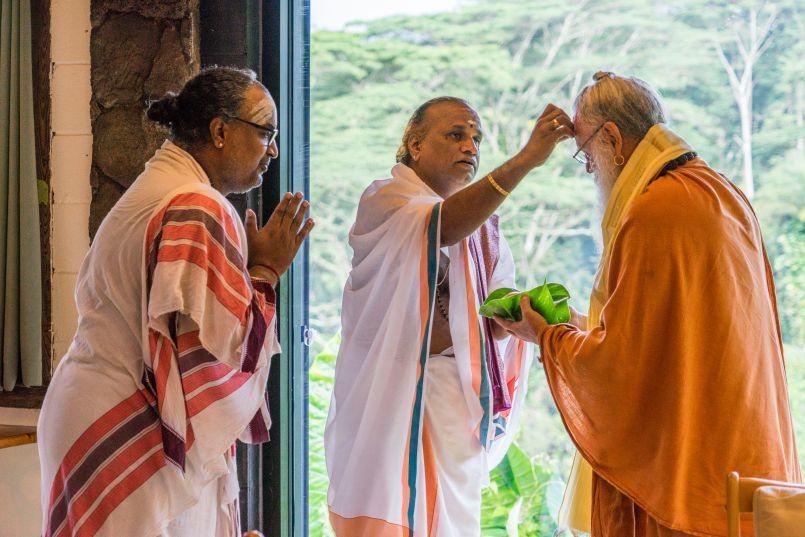
Sivasri Shanmugam Sivacharyar -- son of late Sivasri Sambamurthy Sivacharyar of Kaaligambal Temple, Chennai -- and Sivasri Sundaramurthy Sivacharyar -- principal of the Saiva Agama Pathashala -- came to the monastery recently and paid their respects to the monks. Wonderful conversations were had that detailed future plans for the Iraivan mahakumbhabhishekam and spreading the culture and tradition of Sanskrit to the next generation. These two powerful priests are working with the digitized Agama project and moving that mission forward at their centers.
We thank them profusely for visiting and uplifting us all with their wonderful vibration.
From Our Gurus' Teachings
Archives are now available through 2001. Light colored days have no posts. 1998-2001 coming later.
